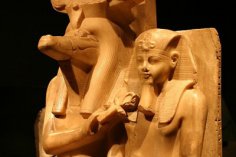
If the average modern person were to look at ancient Egyptian writing, the first thought that would pop into their head might be: what do these funny pictures mean? However, these “funny pictures” have puzzled many scholars throughout history. They all tried to decipher not just the linguistic basis of Egyptian writing, but also the sacred meaning of its inscriptions. Indeed, when it comes to ancient Egyptian writing, two main approaches stand out.
The first area is everyday life. In this case, Egyptologists often had to deal with inscriptions made by ordinary Egyptians when addressing each other.
The second area is religious. Here, papyri and ancient stones contain materials that appear to be letters from Egyptians of various classes addressed to the gods.
Let us touch upon the consideration of religious variants of Egyptian letters, many of which have survived to this day and represent enormous cultural and historical value.
In the late 1980s, Italian archaeologists working in Egypt discovered hundreds of ancient papyri containing invocations to one of the most revered deities among the Egyptians: Sebek. This being is a crocodile god, who was apparently perceived in ancient Egypt as someone who could divinely resolve a wide variety of problems. Sebek (Sobek) was depicted in hieroglyphic form as a crocodile climbing a truncated pyramid. The deity himself was depicted in Egyptian images as a man with the head of a crocodile.
Sobek was revered in Egypt as the god of the Nile flood, and the Nile gave Egypt not just water but the very concept of life itself. The Nile floods helped the Egyptians reap abundant harvests, but could also wash away entire settlements. The crocodile god even had his own, what we would call today, cultural center in ancient Egypt. It was located in the city of Shedit, which the Greeks later called the “City of Reptiles” or Crocodilopolis. Here, archaeologists have found over two thousand mummified crocodiles, buried with special honors.
In the papyri discovered by the archaeologist, questions were asked of Sobek, including questions about when the Nile would flood again, when a child would be born, whether work should be started at a certain time, who stole the sword, and so on. Essentially, he was a true “folk god” who helped the Egyptians obtain a wide variety of answers to their questions. Sobek conveyed his judgment through the temple priests.
Thanks to these letters, we can draw conclusions about how the people of Ancient Egypt lived, and this also allows us to compare their interests with the interests of modern man and conclude that we are not so far from each other.





